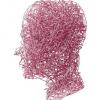Sencha, Ginkgo, Ginseng. (& other attempted herbal adderalls)
![]() Written by Shane
Written by Shane ![]()
In terms of improving performance in the youth, these three common herbs are among the most effective. All three decrease brain oxidation, increase neurotrophin levels, and improve aspects of memory, including working, verbal, and visual. All three make you energetic, oppose inflammation, induce favorable epigenetic changes, and act as vasodilators, improving blood flow and cardiovascular tone. While tea and ginkgo may slightly increase blood pressure and rate, ginseng appears to lower both. Ginkgo increases testosterone production, green tea inhibits it, ginseng has no measurable effect. There may be benefits on the adrenals, kidneys and liver, though less pronounced than the heart and brain.
Stacking all three may be advantageous in the case of ADHD. My experience is that this is a wonderful combination, although it can sometimes be overwhelming and have “speedy” side effects. Although much safer, this stack is still unfortunately not as quite effective as amphetamine.
Taken Before Breakfast? One simple trick.
Provided you don't indulge in too many demotivational substances ( including bacopa, which is helpful @ 125mg three nights per week to control dopamine receptor levels[1]), the combination of tea, ginkgo and ginseng will keep you going like the energizer bunny until bedtime, even though you take them before breakfast. These compounds have over 300% bioavailability when taken on an empty stomach[1]. Their half-lives are around 3 hours. So, what's the point?
including bacopa, which is helpful @ 125mg three nights per week to control dopamine receptor levels[1]), the combination of tea, ginkgo and ginseng will keep you going like the energizer bunny until bedtime, even though you take them before breakfast. These compounds have over 300% bioavailability when taken on an empty stomach[1]. Their half-lives are around 3 hours. So, what's the point?
One guy doses at 6am. It's a bold move, but one that pays off. He's feeling great within minutes, because there's no food to obscure its transference to his bloodstream. What's more? He will be feeling good just as long as another guy, who takes his five hours later with lunch. How's that possible? It's all to do with that empty stomach or fasted state.
The second guy isn't in a terrible hurry and takes his stuff with lunch, 11am. It's five hours later for the first guy (I feel like this is some thought experiment in relativity), nearly two half-lives, but if you do the math.. (300%) * (1/2)^(5/3), you find it's 95%!! While the first guy has already been going strong for hours, he has practically the same plasma levels as the second guy
 . This was quite surprising when it was first brought to my attention a few months ago. I hadn't considered it possible to sustain a plasma level by such a simple method.
. This was quite surprising when it was first brought to my attention a few months ago. I hadn't considered it possible to sustain a plasma level by such a simple method.
I wouldn't recommend it to start. Just combine a few cups of tea and 1600mg ginseng, then after a week, add 60mg of ginkgo with lunch gradually tapering to 120mg. Then after a few weeks start doing it before breakfast, with the tea and ginseng. You'll be absolutely floored your first time if you do a potent sencha brew, 1600mg ginseng, and 120mg ginkgo all before breakfast. You can also start with 800mg ginseng and a single cup of tea for a couple weeks, if you want to be extra cautious.
Neurotransmitter or Neurotrophin?
Tea boosts NGF and BDNF. Ginseng[1] and ginkgo[2] increase all three: NGF, BDNF and GDNF. When combined, the encouragement on nerve growth is so extensive, I believe these substances given to old people may improve stroke recovery, and given to children may increase IQ (which is more than you can say for ritalin) 
All three also boost frontal dopamine and striatal acetylcholine, modulate global glutamate, cytokines, adrenals and glucocorticoids, and have complimentary effects on GABA expression (ginseng is a GABAB antagonist and ginkgo is a GABAA antagonist, while the theanine in tea decreases GABA turnover and increases level). That's potentially benefiting you people with inattentivity, depression, and anxiety. I didn't find any studies involving all three (just combos of two), so consider yourselves guinea pigs.
Vasodilation. (Cerebral?)
Compounds which promote cerebral vasodilation often promote vasodilation across the entire body, and vice versa.
Although no rival of ginger (a benchmark in vasodilation), tea is still an impressive vasodilator. Among tea drinkers, there is reduced risk of cardiovascular events relative to baseline. Tea is reported to acutely increase arterial diameter and flow dilatation on the order of 4%, similar in potency to dark chocolate flavonoids. Four percent may sound miniscule, but anyone familiar with physics knows the volumetric flow rate goes with the fourth power of the pipe radius, so this becomes (1.04)^4 = 1.17. A 17% increase in blood flow is significant. This may be due to enhancement of endothelial dilation, reversal of “endothelial vasomotor dysfunction”, and stimulation of nitric oxide (NO) production.
Ginseng can perhaps rival ginger. It promotes flow in lung vessels by 44%, and prevents platelet-aggregated thrombosis via elevation of cAMP. Ginseng lowers elevated cholesterol, influences ion channels, improves arterial elasticity, and more:
“… ginseng’s potential cardiovascular benefits through diverse mechanisms that include antioxidation, modifying vasomotor function, reducing platelet adhesion, influencing ion channels, altering autonomic neurotransmitters release, and improving lipid profiles.”
At 21%, ginkgo can perhaps also rival ginger. Its vasodilatory mechanisms are broadly similar with ginseng’s, but unlike ginseng, its vasodilatory properties have made media headlines countless times. Perhaps ginseng deserves equal attention in this respect. Ginkgo’s effects take one hour to peak, and last around four to six. This is consistent with the half-life of ginkgolides and bilobalide:
“... the dilatory effect Ginkgo biloba on pial arterial vessels (less than 100 micron diameter), has been measured in cats. After 20 minutes there was a significant dilatation of 7% which increased to 21% by one hour. Results from 6 cats treated with 0.3 mg/kg/min. Compared with a group of 6 control cats; the same blood gas "steady state" situation applying to both groups. Results imply a cerebral metabolic effect of Ginkgo biloba that induced a slow rise in cerebral blood flow”
See this note on ginkgo and microvasculature in the axon[note], as well as this quote:
“... ginkgo flavonoids acts specifically to dilate even the smallest microcapillaries, which has a widspread effect on all the body's organs, especially the brain.”
Quinoa, Catuaba, Mu Gua.
Devinthayer recently brought to my attention the most potent DRI in the plant kingdom. With a Ki of 1.03 nM (for SERT 0.65 nM, and for NET 140 pM), and found naturally in quinoa, it's hederagenin. Quinoa is a doubly-good option for ADHD because of its magnesium[3] content which, like bacopa and memantine[4], helps to regulate dopamine and glutamate receptors. However it's not clear how much the quinoa seeds (the part we eat) contain:
“... the sapogenin content in seeds of sweet genotypes varied from 0.2 to 0.4 g kg−1 dry matter and in seeds of bitter genotypes from 4.7 to 11.3 g kg−1 dry matter. The difference in sapogenin content between leaves and seeds was much higher in bitter genotypes than in sweet genotypes. Hederagenin was the major sapogenin found in leaves, and oleanolic acid in seeds”
Catuaba improves rodent performance in the forced swimming test as well as boosting serotonin and especially dopamine[5]. Unlike Mucuna, a plentiful source of L-Dopa, Catuaba appears to work by dopamine uptake. It has some crude alkaloids, so it's best to obtain a reputable extract.
Mu gua (aka Flowering quince) is another selective DRI[6], not as potent as hederagenin, but very few spillover effects on serotonin or acetylcholine. Not much else is known about it.
Since these are all dopamine reuptake inhibitors, combining them won't result in any synergy. Better to add one of these to one of the other stacks.
Ferulic acid, Magnesium, Zinc (Lithium, Chromium).
Globally, amphetamine may exert much of its effect by glutamate. So sensitizing the glutamate system may be helpful. That's what ferulic acid, magensium and memantine all have in common: NMDA-antagonism. Since glutamate is the chief excitatory transmitter, regulating it will help deficits or tolerance observed with some dopaminergic pharms, including benzos[7] and alcohol.
“... for instance, the concomitant administration of ferulic acid with benzodiazepines may reduce their sedative effect”
Additionally, magnesium[note] and zinc[note] enjoy dopamine receptor-upregulating properties of their own. Similar trends are seen with lithium[note] and chromium[note]. With chromium the evidence is pouring in for depression, but only zinc and magnesium are strongly established in ADHD.
Maca, Shilajit, Gotu Kola.
While maca boosts dopamine and noradrenaline and lowers corticosterone[8], it also has cardiovascular and mitochondrial benefits. It's an FAAH inhibitor, with mood and motivation promoting effects.
Shilajit improves memory, promotes calmness and increases dopamine and serotonin[9]. It may also have a role in things like chronic fatigue, due to HPTA regulation (which it may be better at than schizandra) and due to its promoting mitochondrial health[note].
Goto kola increases alertness while promoting a calm mood[note]. It has received less attention, but early research suggests a prominent dopamine component (I also wouldn't be surprised if it was a GABA antagonist, like ginkgo and ginseng):
”... another neurotransmitter, other than serotonin, that its production might be induced by Gotu kola and might have an effect on C. elegans, is dopamine. Dopamine is a neurotransmitter that helps mediate emotion and motivation, which is one of the supposed effects of Gotu kola, that it is relaxing and increases happiness (Salamone et al., 2003). One recent study concluded that dopamine inhibits egg-laying in wild-type C. elegans [as does Gotu kola, suggesting a dopaminergic mechanism)”



































































